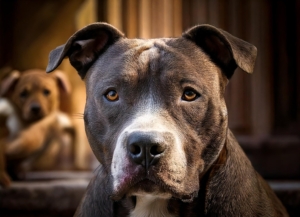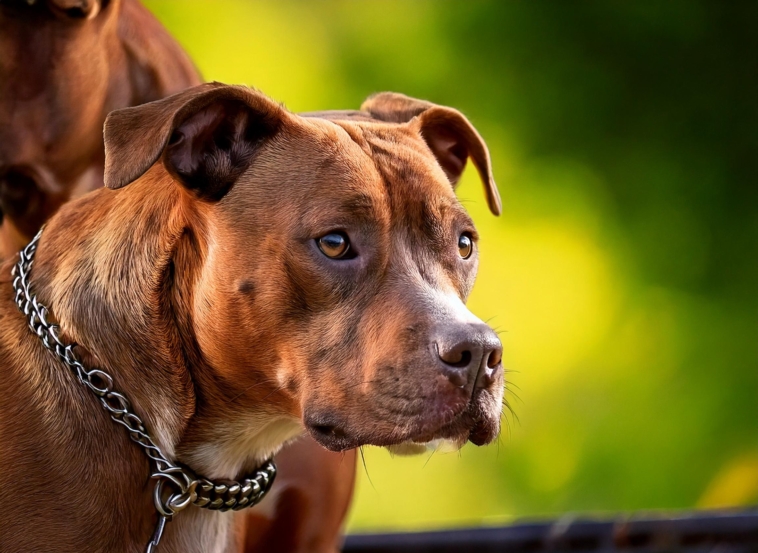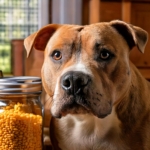Last updated on October 24th, 2024
Here’s an overview:
Introduction: History of Pitbulls
Origins and Early History of Pitbulls
Pitbulls in the 19th Century: From Bull-Baiters to Working Dogs
The Role of Pitbulls in Early American Culture
And in World Wars: Heroic Endeavors of Pitbulls
Increase in the Negative Image and Operation of Bsl in the Recent Past
Rehabilitation and Advocacy: Changing the Narrative
Famous History of Pitbulls and Their Impact on Public Perception
Modern-Day Pitbulls: Characteristics and Temperament
Training and socialization: Getting a well behaved pitbull
Pitbulls in Popular Culture: Media and Celebrity Influence
Conclusion: The Evolution and Generation that belongs to History of Pitbulls
Introduction: History of Pitbulls
Pitbulls are one of the dog breeds mostly misrepresented. They have an extensive history and origin. Pitbulls originated in the 19th century in England. They were bred for bull-baiting, But after bull-baiting was made illegal, they slowly turned into as pets. Notable features include their:
Physical Traits:
- Muscled bodies
- Short covering
- Wide heads
Temperament:
- Loyalty
- Intelligence
- Activity
They worked on farms, guarded homes, served as soldiers and even pets. They are, in fact, loving and loyal, given the good treatment and proper training despite what the media depicts.
Origins and Early History of Pitbulls
The history of the pit bull breed can be traced back to Great Britain. They are derived from Old English Bulldogs and terriers. Firstly, they took part in bull-baiting, which was a blood sport. After the prohibition of bull-baiting in 1835, admirers had to switch to dog fighting taking into consideration the impressive persistence and agility of the breed. Pitbulls developed into one of the most all-purpose combat animals.
- Herding livestock
- Guarding property
- Family pets
The reason behind their massive adoption in these duties was their robust structure and versatility.
Pitbulls in the 19th Century: From Bull-Baiters to Working Dogs
The 19th century for pitbulls marked a twentieth transition, a transition from being a bull-baiter to occupying different tasks in the society. Bred mainly for bull-baiting, their muscular builds would simply enthrall all devoted bull – baiting fans. After bull-baiting, however, there were other functions where pit bull type found themselves to be of universal appeal:
- Rescue work: They undertook all the search and rescue work due their enthusiasm and ability to smell and without giving up easily.
- Pets: Their dutiful and calm demeanor made them form close attachments with their owners and families.
Through their adaptability and a strong work ethic, they proved to be useful, showcasing their worth in more ways than bloodshed.
The Role of Pitbulls in Early American Culture
Pitbulls came to America with the British immigrants in the 19th century.
- Farm Work: Pitbulls were great in the handling of the cattle including the sheep due to their farming abilities.
- Protection: They acted as watchmen to the farms against intruders and wild animals.
- Hunting: Their great sense of smelling and spirit led them in going after and fetching the target of the hunters.
Moreover, the pit bulls held a special place in the American imaginations characterized by stubbornness or steepness of body.
And in World Wars: Heroic Endeavors of Pitbulls
The First World War as well as the Second World War saw the bullies being actively engaged. They were also used to send messages and hence acted as messenger dogs passing communications. On top of their duties as couriers, they were also n employed on other tasks, which they did very well.
- Mascots: Pitbulls are used when it was needed boost the morale of the troops.
- Search and Rescue: Pitbulls-stunned soldiers who have been injured were also rescued by these animals.
Two wars ago, in World War I, a Pitbull called Sergeant Stubby emerged as a star due to his heroics. Stubbs’s sharp response to his ears helped troops to detect poison gas and hidden armies, which made him a decorated military figure.

From Mismatches to Muzzles: Changes in the way pitbulls are Perceived as Family Dogs in the Post WWII Era
By the time of the post-World War II generation, the general attitude towards pitbulls was starting to change. Pitbulls did exactly that. Veterinary surgeons and dog trainers started speaking in favor of their soft sides with kids.
- Illustrative Media: Movies and comic strips presented pit bull in positive light as a family dog.
- Expert Endorsements: For their temperament and Shutterstock.com/ Lindas15748 pit bulls regarded as a breed experts promoted.
- Community Acceptance: Families gave positive feedback easing acceptance.
All these aspects helped change the notion that pitbulls are pets that belong to only fighting breeds.
Increase in the Negative Image and Operation of Bsl in the Recent Past
In media coverage, especially towards the end of the 20th century, pit bulls became increasingly and exclusively associated with violence in the press, death by hij. These stories helped to create panic and misconceptions about pitbulls. Therefore, cities and towns started implementing laws to restrict the given breed and even more so BSL focusing on pitbulls.
- BSL often included:
- Muzzling of dogs in public in all circumstances
- Severe general confinement rules
- Complete bans and large penalties for violators’ actions
These laws did more harm than good, as they abused the responsible owners of the breed and stressed a punitive stance instead of addressing owner education or responsible ownership with respect to pets, thus reinforcing and institutionalizing the stigma against that breed.
Rehabilitation and Advocacy: Changing the Narrative
These attitudes are starting to change for the better, and so the efforts for rehabilitation and for advocacy for Pitbulls are on the rise. Their areas of focus include:
- Education: Providing education on the myths and the truth behind the breed.
- Training Programs: Training to enhance care and behavior i.e. socialization.
- Legislation: Advocating for the lifting of breed-bans and supporting appropriate legislation.
- Adoption Initiatives: Reforming all adoptions of Pitbulls through shelters and rescues.
They contend that with responsible ownership, training, and knowledge of the breed, it is possible to change the poor image of Pitbulls and use them as loving pets with positive stereotypes rather than negative ones.
Famous History of Pitbulls and Their Impact on Public Perception
Famous pit bulls have significantly influenced society, while the media and the services provided by people and rescues have also shaped their impact.
Petey from ”The Little Rascals“
- A beloved figure from the 1920s, who appears very endearing to the audience.
Sergeant Stubby
- This brave Connecticut canine veteran belonging to the 102nd Infantry earned a war medal during the First World War and actively changed the perceptions of Pitbulls as loving and protective breeds.
Modern-Day Pitbulls: Characteristics and Temperament
It is evident that modern-day Pitbulls aim at bolstering their physical muscles as well retaining their gentle nature. The guard dog under consideration weighs about 30-60 pounds and its height ranges from about 17-21 inches. Their hair is very short and smooth and comes in shades of brown, white black and even blue.
Key Characteristics
- Intelligence: They readily take orders and respond well to commands.
- Loyalty: Foster close familial relationships.
- Energy Levels: They fairly active and in need of regular exercise.
“Pitbulls aren’t mere animals that you own as pets. They are part of the family since they are so loving.”
Training and socialization: Getting a well behaved pitbull
Pitbull training commences in earnest at the very tender age of puppy hood where classes enable learning of basic concepts. Positive reinforcement in behavior towards the desired goals gradually wins trust.
Key Training Tips:
- Consistency: One set of commands and reward is used.
- Patience: Lots of time with a lot of repetitions, lots of patience.
Socialization Techniques:
- Schedule puppy play dates with other dogs.
- Make the dog used to different noises, sights.
“Socialization techniques should be employed properly so that an aggressive pitbull can emerge.”
Pitbulls in Popular Culture: Media and Celebrity Influence
Some celebrities speak in favor of pitbulls, and this really boosts their image.
Notable Celebrity Pitbull Owners
- Cesar Millan: A famous dog behavioral professional who had a pitbull daddy featured in the show and this displayed the capability of the pitbull mountain dog.
- Jessica Biel: Is working for the responsible ownership of the breed, pitbull.
- Kevin Bacon: Recently declared in public the warm companionship with his pitbull.
Conclusion: The Evolution and Generation that belongs to History of Pitbulls
Knowing the historical evolution of these dogs makes it easier to appreciate their various roles in society. Evolving from working dogs into loyal members of the family, the Pitbulls underline exemplary capabilities of flexibility and endurance.
Historic roles:
- Utility dogs
- Adversaries in dog fighting
- Farm dogs
Modern roles:
- Household dogs
- Dog therapy assistants and service dogs
- Dogs in dog sports
Recognizing the progression makes one to have more educated opinions opening up to responsible care and promotion that respects the past and the possible future of these beautiful creatures.
Article by: Tawab Sukhera (Ethologist)




